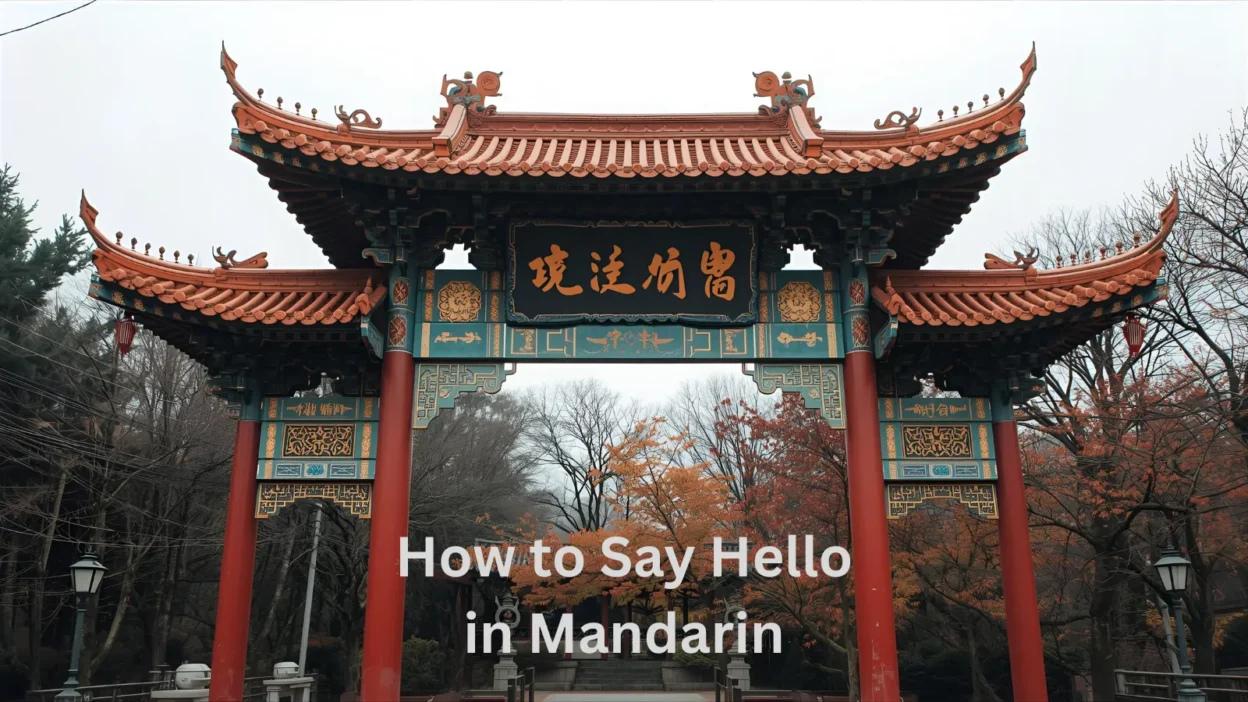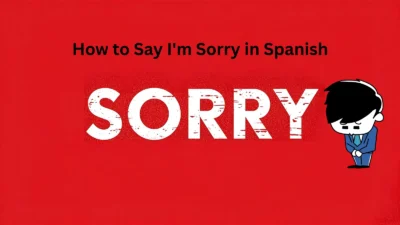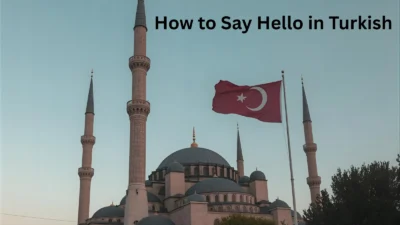How to Say Hello in Mandarin is one of the most useful phrases to learn when starting the language. Mandarin greetings are simple yet carry cultural importance, helping you show respect and friendliness.
Whether you’re meeting someone formally or chatting casually, knowing the right way to say hello will make your conversations smoother and more natural. It’s the first step to building confidence in speaking Mandarin.
Say Hello in Mandarin
15 Ways to Say Hello in Mandarin
| No. | Mandarin Phrase | Pinyin | Meaning / Usage |
|---|---|---|---|
| 1 | 你好 | Nǐ hǎo | Standard hello, polite and common |
| 2 | 您好 | Nín hǎo | Respectful hello (to elders, formal) |
| 3 | 大家好 | Dàjiā hǎo | Hello everyone |
| 4 | 早安 | Zǎo ān | Good morning (formal) |
| 5 | 早上好 | Zǎoshang hǎo | Good morning (casual) |
| 6 | 上午好 | Shàngwǔ hǎo | Late morning greeting |
| 7 | 下午好 | Xiàwǔ hǎo | Good afternoon |
| 8 | 晚上好 | Wǎnshàng hǎo | Good evening |
| 9 | 喂 | Wéi | Hello (used when answering the phone) |
| 10 | 哈喽 | Hālóu | Casual hello (loanword from English) |
| 11 | 嗨 | Hāi | Hi (very casual, friendly) |
| 12 | 你好吗? | Nǐ hǎo ma? | Hello, how are you? |
| 13 | 最近好吗? | Zuìjìn hǎo ma? | Hello, how have you been recently? |
| 14 | 久仰 | Jiǔ yǎng | Formal hello, “I’ve heard about you” (polite, first meeting) |
| 15 | 好久不见 | Hǎo jiǔ bú jiàn | Long time no see (friendly greeting) |
Let’s explore 15 ways to say hello in Mandarin, complete with real-life dialogues and cultural background to help you use each one correctly.
1. 你好 (Nǐ hǎo) – Hello
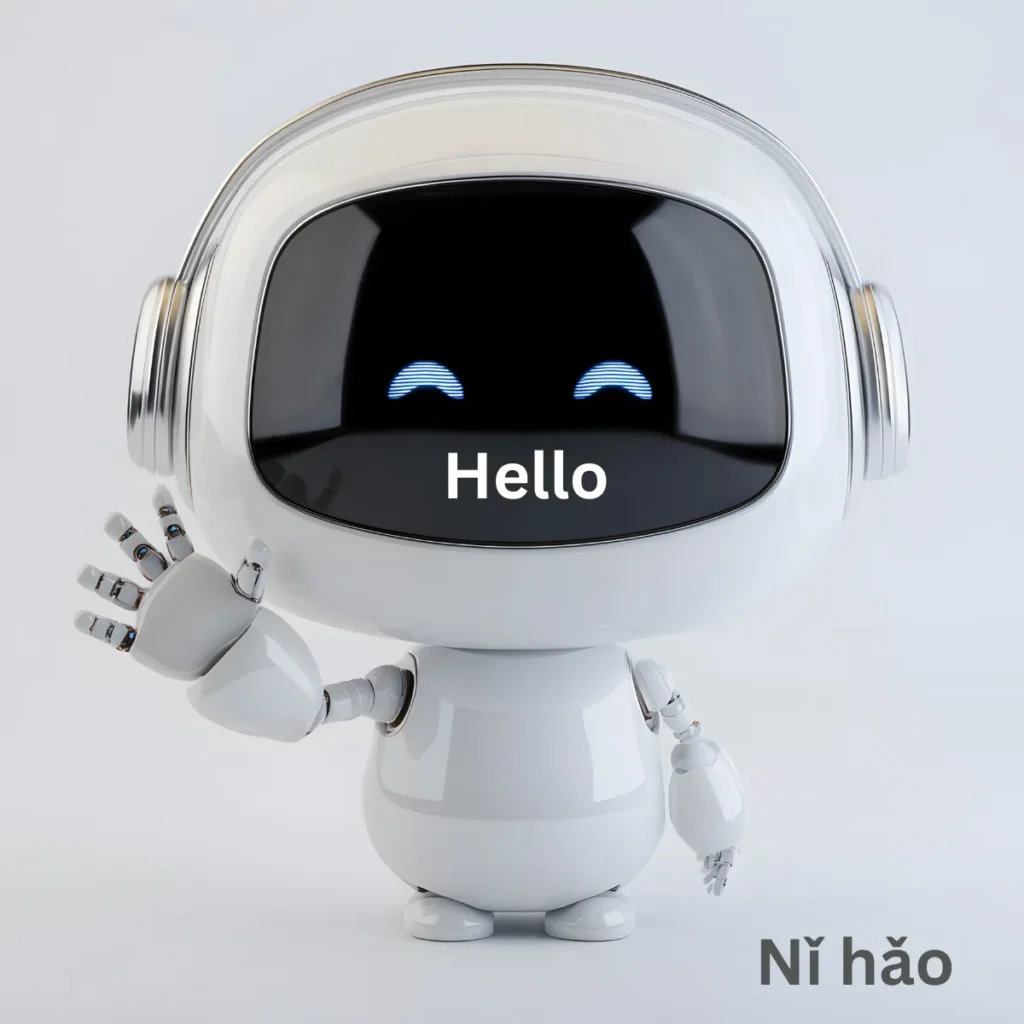
Origin:
Literally means “you good.” It’s the most standard and widely taught greeting for “hello” in Mandarin.
Example:
👤 User A: 你好!你是新来的老师吗?
👤 User B: 你好!是的,我叫李老师。
Use: Polite, standard greeting for most social situations.
2. 您好 (Nín hǎo) – Hello (formal)
Origin:
“您” is the respectful form of “you” (Nǐ). This version is used to show deference, often to elders or superiors.
Example:
👤 User A: 您好,张经理。
👤 User B: 您好,请进。
Use: Formal and respectful; ideal for elders, teachers, or authority figures.
3. 喂 (Wèi) – Hello (on the phone)
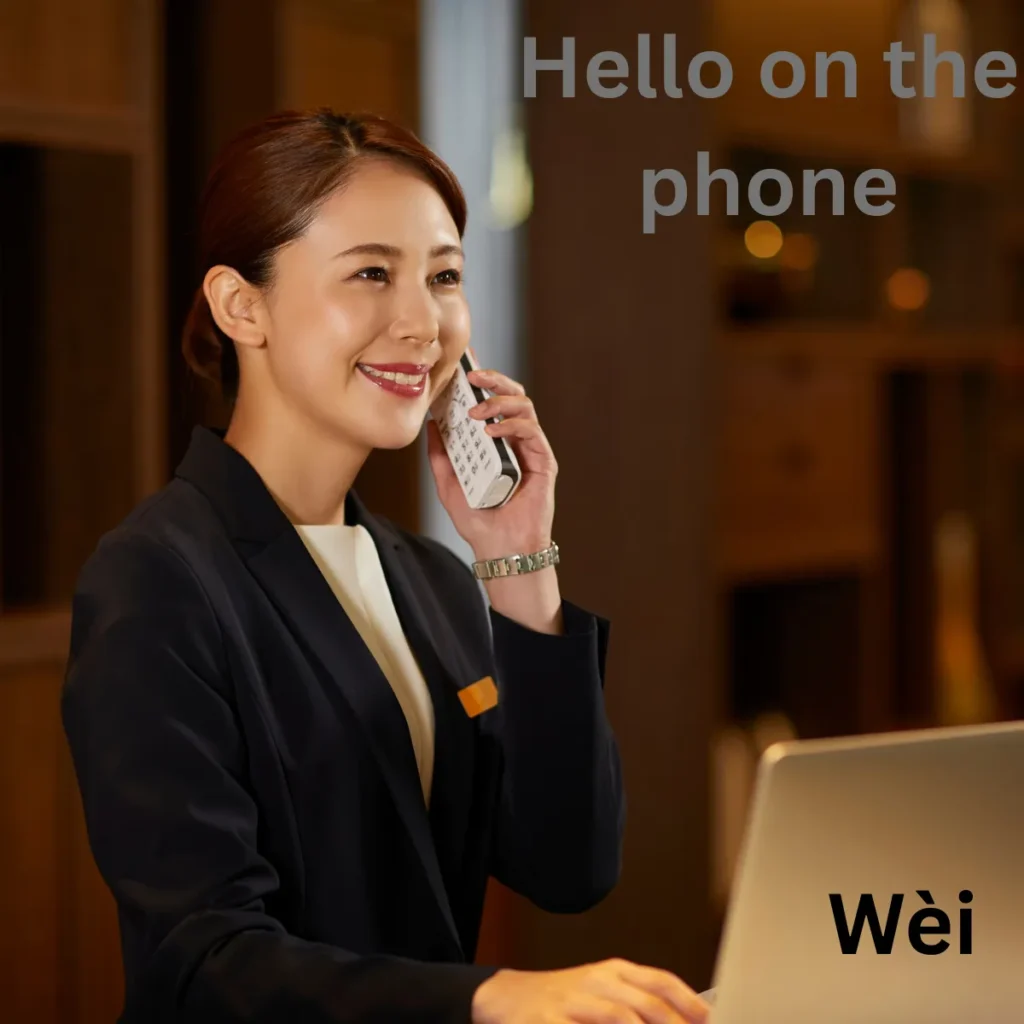
Origin:
Unique to telephone conversations. “喂” grabs the listener’s attention, similar to “hello?” on a call.
Example:
👤 User A: 喂?请问李先生在吗?
👤 User B: 喂,我就是。
Use: Only used when answering or starting a phone call.
4. 早上好 (Zǎoshang hǎo) – Good morning
Origin:
A polite time-specific greeting, literally meaning “morning good.”
Example:
👤 User A: 早上好,王老师!
👤 User B: 早上好,同学们!
Use: Formal or neutral, used before noon.
5. 早 (Zǎo) – Morning!
Origin:
An informal, shortened version of “早上好.”
Example:
👤 User A: 早!今天看起来很精神啊!
👤 User B: 哈哈,谢谢,昨晚睡得很好。
Use: Friendly, casual greeting in the morning.
6. 大家好 (Dàjiā hǎo) – Hello everyone
Origin:
Literally means “everyone good.” Commonly used when addressing a group.
Example:
👤 User A: 大家好,我是你们的新同事。
👤 User B: 欢迎加入我们团队!
Use: Public speaking, meetings, or greeting multiple people.
7. 很高兴认识你 (Hěn gāoxìng rènshì nǐ) – Nice to meet you
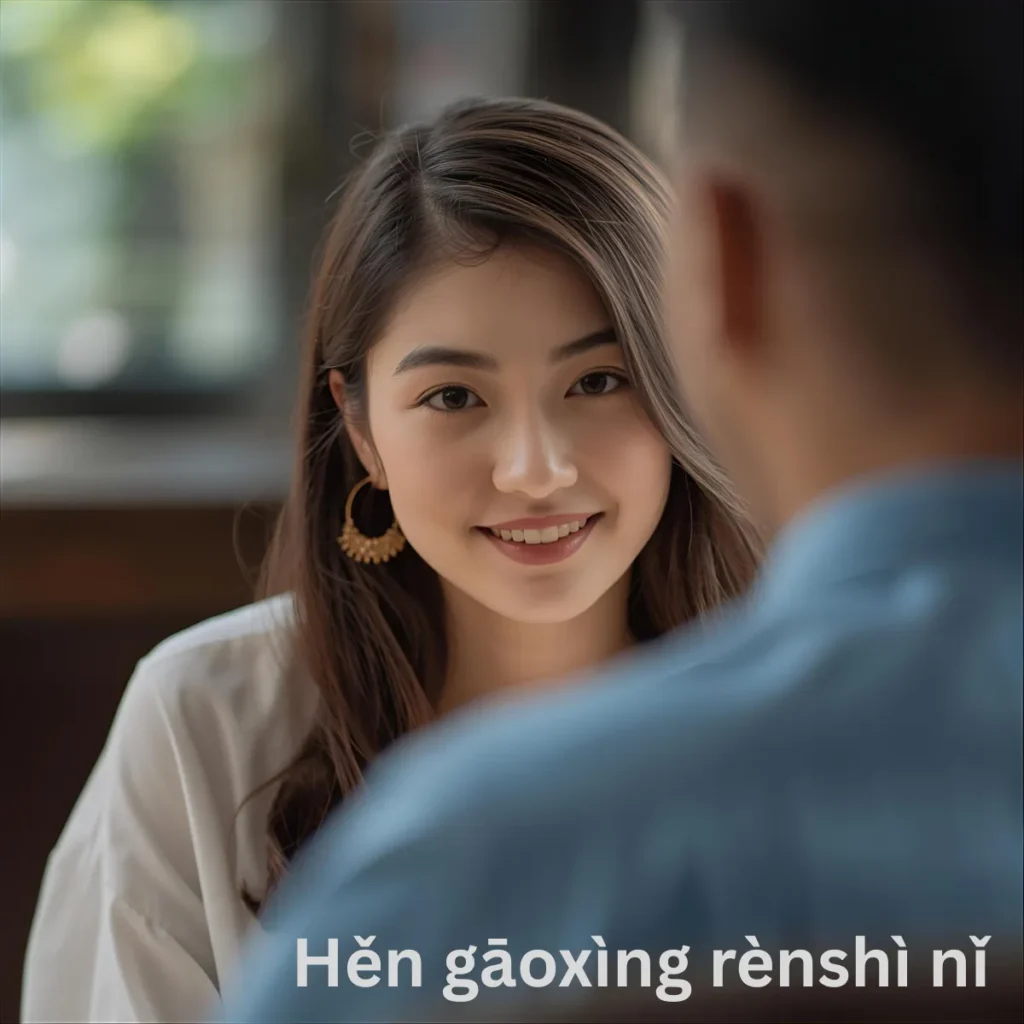
Origin:
Used in introductions. It literally means “Very happy to meet you.”
Example:
👤 User A: 我叫Lisa,很高兴认识你。
👤 User B: 我也是!
Use: Formal or semi-formal when meeting someone new.
8. 哈喽 (Hālóu) – Hello (loanword)
Origin:
A transliteration of the English word “Hello,” often used in informal or trendy settings.
Example:
👤 User A: 哈喽,小美,今天去哪儿?
👤 User B: 去逛街呀,一起吗?
Use: Very casual; used among young people or online.
9. 你吃了吗?(Nǐ chī le ma?) – Have you eaten?
Origin:
A traditional Chinese greeting, especially common in older generations. It shows care rather than a literal question.
Example:
👤 User A: 你吃了吗?
👤 User B: 吃了,谢谢你关心!
Use: Very informal and cultural; mainly among elders or close acquaintances.
10. 嗨 (Hāi) – Hi
Origin:
Also borrowed from English, “嗨” sounds just like “Hi” and is increasingly popular in social media or among youth.
Example:
👤 User A: 嗨!最近怎么样?
👤 User B: 还不错,你呢?
Use: Very informal and friendly.
11. 久仰 (Jiǔyǎng) – I’ve heard so much about you
Origin:
Traditional, formal greeting used when meeting someone of prestige for the first time.
Example:
👤 User A: 久仰大名,今天终于见到您了。
👤 User B: 哪里哪里,彼此彼此。
Use: Highly formal or respectful contexts, such as business or academic settings.
12. 好久不见 (Hǎojiǔ bú jiàn) – Long time no see
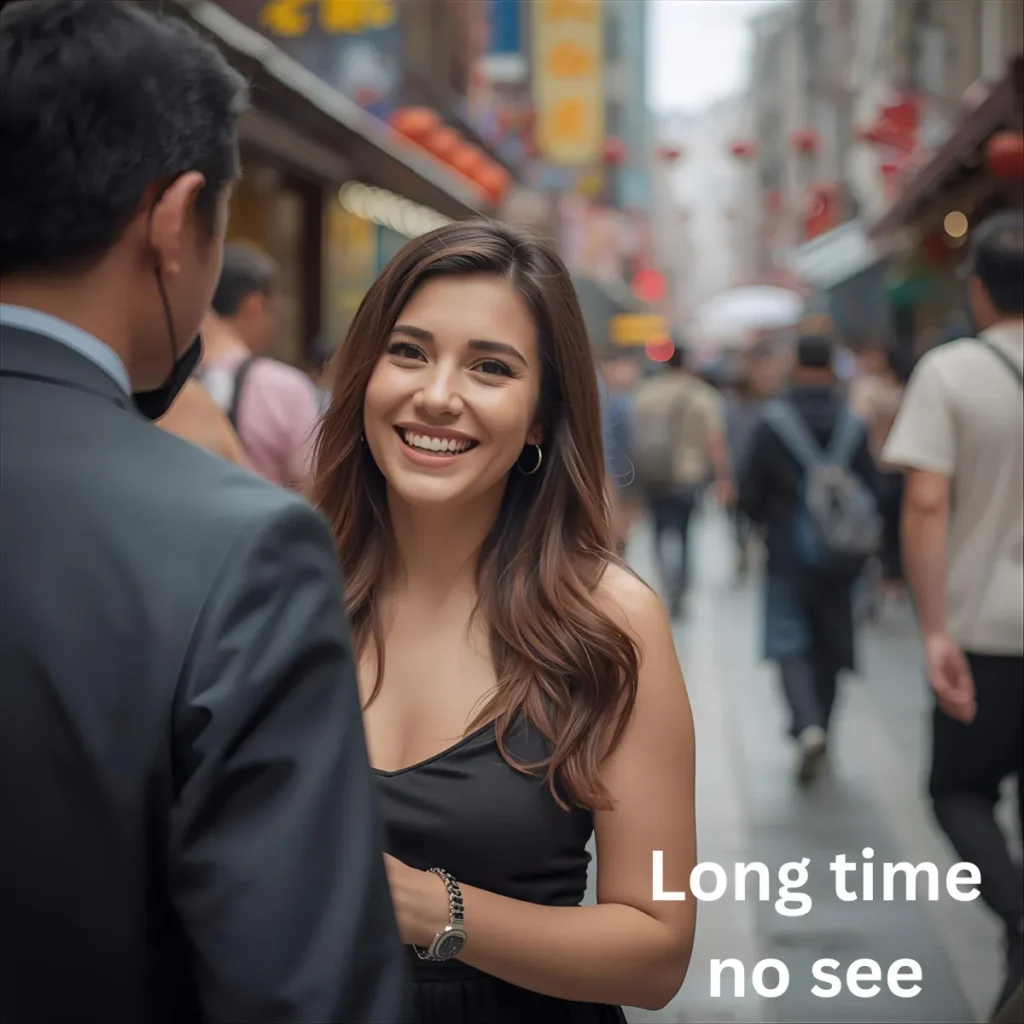
Origin:
This phrase is the source of the English expression “Long time no see,” which is a direct translation from Chinese!
Example:
👤 User A: 好久不见,你变了好多!
👤 User B: 是啊,时间过得真快!
Use: Casual, for reconnecting with someone you haven’t seen in a while.
13. 在吗?(Zài ma?) – Are you there?
Origin:
Common in texting or online chat; used to get someone’s attention instead of just saying “hello.”
Example:
👤 User A: 在吗?有事找你。
👤 User B: 在的,怎么了?
Use: Very casual; only in written communication or chats.
14. 朋友们好 (Péngyǒumen hǎo) – Hello friends
Origin:
A formal yet warm group greeting used in speeches or presentations.
Example:
👤 User A: 朋友们好,欢迎来到今天的讲座。
👤 User B: 谢谢主持人!
Use: Formal settings, public speaking, or broadcasting.
15. 老师好 / 同学好 (Lǎoshī hǎo / Tóngxué hǎo) – Hello teacher / Hello classmates
Origin:
Culturally embedded in the classroom structure. Chinese students greet teachers as a group to show respect.
Example:
👤 Students: 老师好!
👤 Teacher: 同学们好,请坐。
Use: School settings; shows mutual respect in educational environments.
Conclusion:
Mastering how to say hello in Mandarin is more than just learning a word—it’s about embracing culture and connecting with people. From the widely used Nǐ hǎo to casual greetings with friends, each phrase opens the door to smoother conversations and stronger relationships. By practicing these greetings, you’ll not only sound more natural but also show respect and interest in the Mandarin-speaking world.
